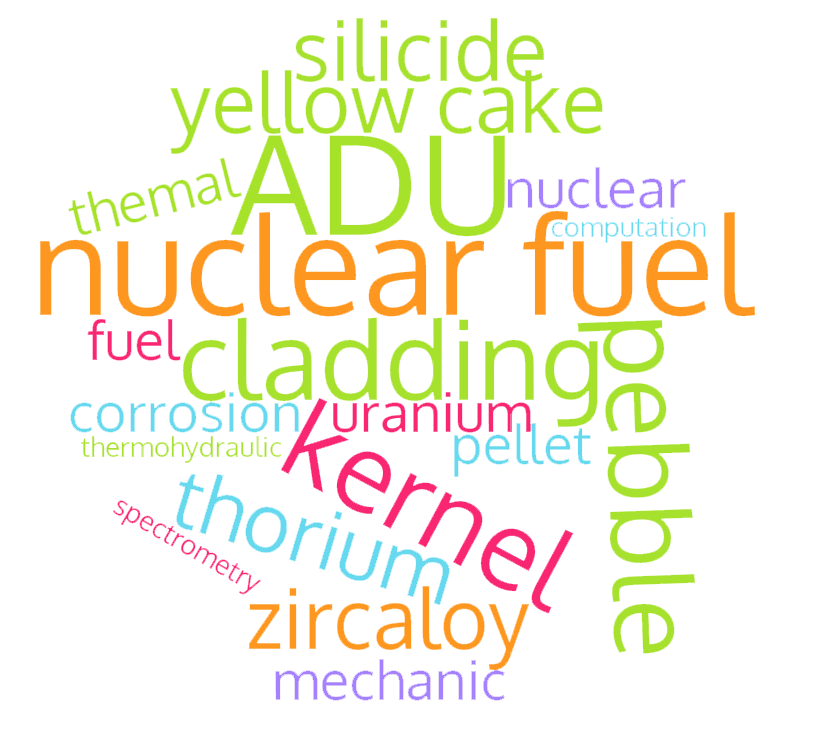ANALISIS FASA MINOR DENGAN TEKNIK DIFRAKSI NEUTRON
DOI: http://dx.doi.org/10.17146/urania.2014.20.3.2393
Sari
ABSTRAK
ANALISIS FASA MINOR DENGAN TEKNIK DIFRAKSI NEUTRON. Keberadaan fasa minor dalam suatu cuplikan telah dianalisis dengan teknik difraksi neutron. Dalam penelitian ini dipilih cuplikan partikel nano Fe (PNF) sebagai objek studi kasus. Langkah pertama adalah menyiapkan cuplikan PNF dengan teknik ball milling. Cuplikan hasil milling selanjutnya disebut FIC2. Keberadaan fasa-fasa yang terbentuk di dalam cuplikan FIC2 dianalisis secara kualitatif dan kuantitatif dengan teknik difraksi neutron resolusi tinggi (HRPD) dan difraksi sinar-X (XRD). Data difraksi dianalisis dengan metode Rietveld memanfaatkan program FullProf dan dilakukan dengan mengacu pada data dukung, yakni ukuran partikel dan sifat magnetik bahan. Kedua jenis data dukung tersebut diperoleh berturut-turut dengan PSA (Particles Size Analyzer) dan VSM (Vibrating Samples Magnetometer). Hasil analisis menunjukkan bahwa kualitas fitting pola difraksi neutron lebih baik dari kualitas fitting pola difraksi sinar-X. Dari data difraksi neutron diperoleh bahwa FIC2 terdiri dari fasa Fe, gFe2O3, dan Fe3O4 berturut-turut sebanyak 78,62; 21,37 dan0,01%. Dari data difraksi sinar-X didapat bahwa FIC2 terdiri dari fasa Fe dan gFe2O3 berturut-turut sebanyak 99,96 dan 0,04%; sedangkan keberadaan fasa Fe3O4 tidak teramati.Dengan teknik difraksi neutron, keberadaan fasa minor dapat ditentukan secara akurat.
Kata kunci: difraksi neutron, difraksi sinar-X, fasa minor.
ABSTRACT
ANALYSIS OF MINOR PHASE WITH NEUTRON DIFFRACTION TECHNIQUE. The presence of minor phases in a sample have been analyzed with the neutron diffraction technique. In this research, the sample of Fe nanoparticles (FNP) has been selected as the object of case study. The first step was to prepare the FNP sample with the ball milling technique. Hereinafter, the sample of milling result was referred FIC2. The presence of phases formed in FIC2 were analyzed qualitatively and quantitatively using the high resolution neutron diffraction (HRPD ) and X-Ray Diffraction (XRD) techniques. The diffraction data were analyzed by means of the Rietveld method utilizing a computer code, namely FullProf and performed by referring to the supporting data, namely particle size and magnetic properties of materials. The two kinds of supporting data were obtained from the PSA (Particles Size Analyzer) and VSM (Vibrating Samples Magnetometer), respectivelly.The analysis result shows that quality of fitting for neutron diffraction pattern is better than the fitting quality for x-ray diffraction pattern. Of the HRPD data were revealed that FIC2 consists of Fe, gFe2O3 and Fe3O4 phases as much as 78.62; 21.37 and 0.01%, respectively. Of the XRD data were obtained that FIC2 consits of Fe and gFe2O3 phases with amount of 99.96 and 0.04%, respectively; the presence of Fe3O4 phase was not observed. With the neutron diffraction technique, the presence of minor phase can be determined accurately.
Keywords: neutron diffraction, X-ray diffraction, minor phase.
Teks Lengkap:
PDFRefbacks
- Saat ini tidak ada refbacks.
Penerbit: Pusat Riset Teknologi Bahan Nuklir dan Limbah Radioaktif
Diindeks oleh:









